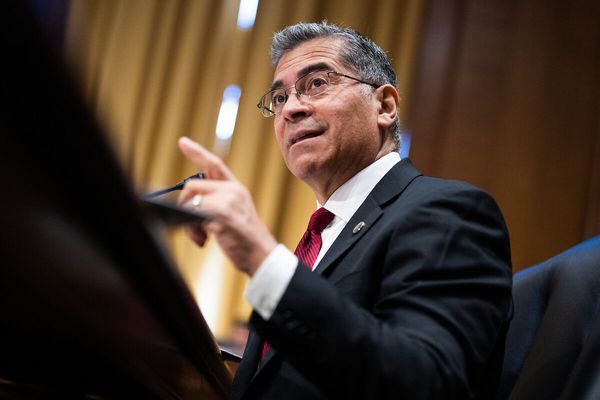
The narrative that traditional, in-person work environments are the sole breeding grounds for innovation and collaborative breakthroughs has dominated the news media discourse. This narrative is not only outdated but also fundamentally flawed in the context of our modern, technologically-driven world.
A study published by Nature recently made headlines, with some media outlets presenting it as conclusive proof that remote work harms innovation and creativity. Spearheaded by a team of researchers from the prestigious Oxford University and the University of Pittsburgh, this comprehensive analysis delved into a staggering expanse of data–over 20 million scientific studies and 4 million patent applications. Spanning an impressive half-century timeframe, this study serves as a time capsule, providing insights into collaborative trends and breakthroughs over decades.
At the surface, this study appears to reinforce the long-held belief that physical proximity is integral to innovation. The analysis suggests a direct correlation between teams working in close quarters and their ability to produce pioneering work. The data paints a vivid picture: Teams that shared physical workspaces were more likely to churn out groundbreaking patents and scientific discoveries. It’s a substantial nod to traditional work environments, seemingly validating the argument that in-person collaboration is superior to its remote counterpart.
However, as we venture further into the timeline, the narrative undergoes a dramatic transformation, particularly post-2010 as significant advancements and innovations have reshaped how we perceive and engage in remote work.
A remarkable turnaround post-2010
The shift in the landscape was illuminated by a critical follow-up study (completed in January 2023) conducted by Carl Frey, one of the original authors of the Nature paper (which looked into data up to 2020), and Giorgio President, both hailing from Oxford. Their research unveiled a striking transformation of the nature of remote collaboration after the landmark year of 2010. What they found was nothing short of revolutionary.
This period witnessed the birth and rapid adoption of technologies specifically made for remote collaboration. Tools like Trello, Zoom, Google Drive, and Slack were not just digital platforms–they became the lifelines connecting remote teams across the globe. Their widespread use democratized remote work, breaking down the barriers that were previously posed by physical distance.
Analyzing trends from the 1980s to the present, the data reveals a fascinating trend: the previously wide chasm between the innovative outputs of in-person and remote teams has been steadily narrowing. The 1980s marked the debut of the first scientific remote collaboration platform. Back then, the data hinted at a somewhat bleak picture for distributed teams: they faced a 5% innovation deficit compared to their in-person counterparts. It was as if remote collaboration carried an invisible tax on creativity and breakthroughs.
As we fast-forward to the dawn of the new millennium, the landscape begins to shift. Between 2000 and 2010, this innovation gap starts to shrink dramatically, dwindling to a mere 1%.
But the real plot twist emerges post-2015. The previously negative coefficient, a marker of the remote work disadvantage, not only zeroes out but takes a surprising leap into positive territory. It's a remarkable turnaround, a testament to the evolving efficacy of remote collaboration. This shift illustrates that distributed teams are no longer just catching up–they are paving new paths in innovation, rewriting the rules of collaborative creativity.
The role of infrastructure in this sweeping change cannot be understated. The quality of broadband infrastructure, often an overlooked factor, has proven to be a pivotal element in this evolution. Specifically, teams whose members had better broadband connectivity experienced improved outcomes on innovation. That evidence further supports the idea that refinements in remote work tech tools offer the key to improved innovation.
Cognitive bias around innovation and remote work
Unfortunately, cognitive biases such as confirmation bias and status quo bias shape the perceptions of remote work's impact on innovation. Individuals skeptical of remote work's effectiveness often exhibit confirmation bias by disproportionately focusing on studies supporting their viewpoint. Even within the same study, they might overemphasize surface-level findings, like those from the Nature study, which highlight physical proximity as crucial for innovation before 2010. As a result, they fail to recognize new data, such as the post-2010s findings. Doing so leads to a biased interpretation of data and an undervaluation of remote work practices, including innovative strategies like virtual asynchronous brainstorming.
Simultaneously, status quo bias significantly influences attitudes toward remote work. This bias manifests in a persistent resistance to shifting from traditional in-office work models, despite strong evidence supporting remote work’s benefits. Organizations often cling to familiar methods and practices, showing reluctance to adopt new work models or integrate emerging technologies into the creative process. This reluctance can cause them to overlook the advantages of remote work and emerging technologies.
To counter these biases, organizations must proactively seek diverse perspectives and remain open to new methodologies and technologies. Actively recognizing and addressing confirmation bias and status quo bias is crucial for developing a balanced, evidence-based approach to remote work. Such awareness enables organizations to make informed decisions about remote work policies and practices, unlocking the innovative potential that remote work environments offer.
The effect of technology on remote work and innovation
Today, we have much better techniques for innovation in remote and hybrid settings, such as a technique I developed to help clients figure out how to adapt to hybrid and remote work called virtual asynchronous brainstorming.
This process starts with selecting digital collaboration tools. Google Forms, ideal for anonymous text-based idea submission, and MURAL, a virtual whiteboard suitable for visual brainstorming, stand out as prime examples.
In structuring the brainstorming session, teams may opt for real-time collaboration, where participants simultaneously contribute ideas via a video conferencing tool and the chosen brainstorming platform. More frequently, they use an asynchronous approach, which allows team members to add ideas independently by a set deadline, catering to different time zones and thinking styles.
Encouraging team members to generate ideas independently before the session can lead to a more diverse array of thoughts and perspectives. In real-time sessions, allotting 10-15 minutes for individual idea contribution proves beneficial. For asynchronous brainstorming, setting a clear deadline for idea submission is crucial.
Organizing the submitted ideas effectively is also key. The facilitator needs to group similar ideas and remove duplicates while retaining all substantive contributions to streamline the brainstorming process. Following this, the team engages in evaluating and providing feedback on the ideas. Anonymous methods for commenting, rating, or voting foster an unbiased assessment based on criteria such as novelty, practicality, and usefulness.
The process culminates in a discussion and finalization phase. Remote teams might convene in a follow-up video call for this, while hybrid teams benefit from combining virtual idea generation with an in-person meeting to finalize discussions. Implementing the selected ideas and assigning follow-up tasks ensures that the brainstorming session translates into actionable projects.
Virtual brainstorming's key strengths include its inclusivity, capacity to elicit a wide range of ideas, and flexibility. It accommodates different personality types, fosters diverse ideas by removing social pressures, and offers participants the freedom to contribute at their own pace, particularly in asynchronous formats. This approach, therefore, stands as a dynamic and effective method for fostering innovation in today's evolving workplace landscapes.
Artificial intelligence will give remote creativity a new boost
While the 2010s featured collaboration technology improving innovation in remote work, the 2020s will feature a whole new area of technology boosting innovation: integrating generative AI into the creative process. For example, GPT-4 beat 91% of humans on a variation of the Alternative Uses Test and got over 99% in the Torrance Tests of Creative Thinking. My clients find that an AI-driven strategy not only matches but often exceeds traditional levels of innovation, catalyzing fresh, groundbreaking ideas and creating an environment where creativity thrives, unbound by the constraints of physical collaboration.
By suggesting ideas, offering data-driven insights, and even playing devil's advocate, generative AI revolutionizes the brainstorming process. A workflow that integrates generative AI into individual idea generation can enhance remote creativity and reduce reliance on traditional in-person collaboration. Here’s how it works:
- Initial idea generation: Individuals input a basic concept or problem statement into a generative AI tool, which then generates a range of ideas, perspectives, and solutions. This helps explore various angles that might be overlooked in conventional brainstorming.
- Refining and evaluating ideas: AI evaluates the generated ideas for potential impact, feasibility, and market readiness, helping to shortlist the most promising ideas for team discussion.
- Enhancing creativity with AI-assisted tools: AI-assisted design tools, predictive analytics, and simulation software further develop and visualize ideas, adding depth and clarity.
- Collaborative integration: Individuals bring these AI-enhanced ideas to their team, ensuring that the discussions are focused on well-thought-out, data-backed, and innovative concepts. These meetings work well remotely or in person, but I encourage hybrid teams to meet in person if possible for this stage.
- Continuous feedback loop: Feedback and insights from team discussions are fed back into the AI system, creating a cycle of continuous improvement and innovation.
The profound impact of AI integration leads to strategic changes in business operations. For example, one of my clients, a late-stage tech startup, found its workers were more productive after going remote during the pandemic but struggled with innovation. By adopting this technique, the company boosted its innovation to pre-pandemic levels, and made the tough decision to release its $1.2 million annual office lease, reallocating these funds to research and development, marketing, and further AI integration.
The implications of these findings are profound for businesses, especially in fast-paced industries like technology, where staying ahead of the curve is crucial.
The traditional belief that innovation is geographically bound to office spaces is being challenged by empirical evidence. Remote work, when supported by the right technology and infrastructure, is not just a viable alternative to in-person collaboration–it’s a superior one.
Gleb Tsipursky, Ph.D. (a.k.a. “the office whisperer”), helps tech and finance industry executives drive collaboration, innovation, and retention in hybrid work. He serves as the CEO of the boutique future-of-work consultancy Disaster Avoidance Experts. He is the bestselling author of seven books, including Never Go With Your Gut and Leading Hybrid and Remote Teams. His expertise comes from over 20 years of consulting for Fortune 500 companies from Aflac to Xerox and over 15 years in academia as a behavioral scientist at UNC–Chapel Hill and Ohio State.
More must-read commentary published by Fortune:
- Economic pessimists’ bet on a 2023 recession failed. Why are they doubling down in 2024?
- COVID-19 v. Flu: A ‘much more serious threat,’ new study into long-term risks concludes
- Access to modern stoves could be a game-changer for Africa’s economic development–and help cut the equivalent of the carbon dioxide emitted by the world’s planes and ships
- The U.S.-led digital trade world order is under attack–by the U.S.
The opinions expressed in Fortune.com commentary pieces are solely the views of their authors and do not necessarily reflect the opinions and beliefs of Fortune.







